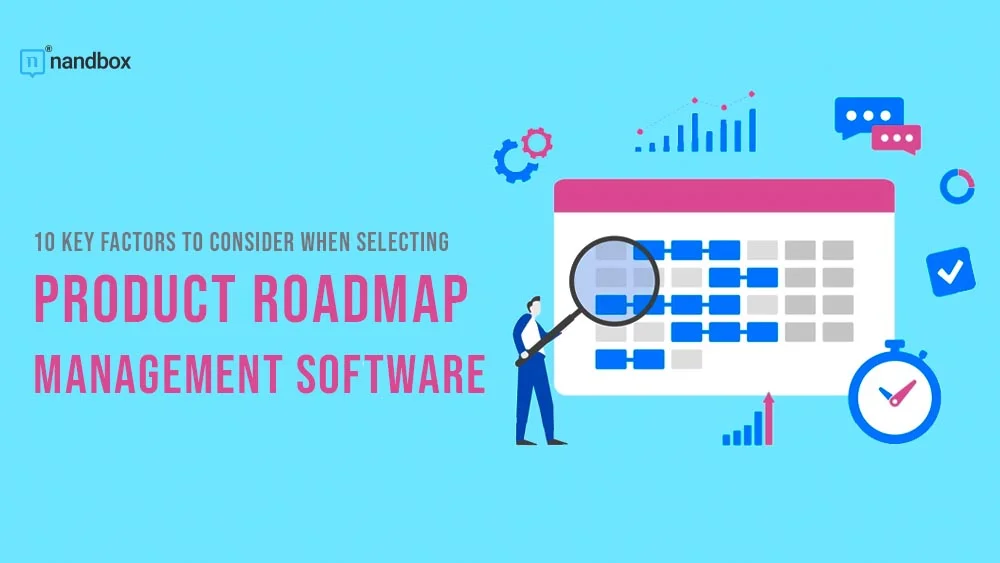Bringing a product from the drawing board to store shelves requires an entire team of experts, all aligned toward the same goal, working on the same timeline, and operating within the same budgetary parameters. Product managers lead these efforts, but to work as efficiently as possible, they typically require the use of advanced software tools. In particular, product roadmap management software plays a vital role in keeping multi-faceted projects on track and aligning the needs of a particular product or even a product portfolio.
Of course, no two examples of product roadmap management software (or PRM) are exactly alike, which makes it critical for product managers to do their due diligence. Here are some of the top factors to keep in mind:
What Is Product Roadmap Management Software?
The purpose of PRM is to help teams refine and add structure to their ideas, successfully shepherding them through multiple phases of iteration and development, providing all stakeholders with a single source of truth regarding features, requirements, and timelines. Product roadmap tools not only provide a space for collaboration, but also visualization tools that make it easy to communicate product specs and features with cross-disciplinary teams.
What Are the Benefits of Using Product Roadmap Management Software?
Some product managers remain pretty old-fashioned, opting for shared spreadsheets or even Word documents instead of more advanced PRM. One of the problems with this approach is that a spreadsheet typically conveys one particular set of information, relevant to a single stakeholder at a certain stage of product development; however, these simple documents cannot convey the complexity of a product that’s evolving over time.
To that end, there are a number of benefits to using PRM software, including:
- Strategic alignment. The best PRM tools provide options to clearly link the features or specs of a product with broader business goals, showing how all participants in the product development journey add value and boost the bottom line.
- Centralized information. Rather than deal with multiple copies and versions of a Google Doc, PRM provides an authoritative and accessible source of truth, equipping all team members with up-to-date product plans, timelines, and more.
- Seamless collaboration. Shareable visualizations make it incredibly easy to share updates and solicit feedback from stakeholders, empowering advanced real-time collaboration.
- Flexibility. PRM also makes it easy for product managers to identify roadblocks or bottlenecks and to revise timelines and milestones as needed.
What to Look for in Product Roadmap Management Software
In most manufacturing or software development companies, it falls to the product manager to select the best software tools. Here are a few things to keep in mind while selecting the best PRM:
1. Your Needs and Goals.
First and foremost, consider your top reasons for seeking PRM. Are you looking to save time? To improve team workflows? To troubleshoot internal issues with collaboration or communication? Knowing your specific needs and goals will help you know what to prioritize in your PRM software suite.
2. Ease of Use.
Before investing in any product roadmap management software, be sure you spend some time demoing it, getting a feel for the software’s interface. Remember that all of your team members will need to master this software, so it’s important to find something relatively intuitive and easy to get started with.
3. Collaboration Tools.
Naturally, you’ll want to verify that your chosen software provides a wealth of collaboration features, making it easy for your team members to work together. Look for tools that allow for comments, suggestions, and feedback. Also verify that the program can be easily accessible organization-wide.
4. Visualization Options.
One of the greatest benefits of product roadmap management software is that it allows multiple options for visualization. Seek software that allows for many different views, from Gantt charts to strategic roadmaps. Also, be sure to get software that makes it easy to present and share these visualizations.
5. Integration.
Chances are, you already have a number of tools in your tech stack. It’s crucial that any PRM you select can be easily integrated with those other tools, whether they are project management programs, issue tracking systems, or whatever else.
6. Cybersecurity.
Any time you pick a new software solution, data security and privacy should be paramount concerns. Always ensure that your PRM selection offers robust data protection, encryption, and user access controls, allowing you to safeguard any sensitive information about your product.
7. Industry Analysis Features.
Product managers have a number of priorities, but one of their main jobs is determining which features should be highlighted. To do this, it’s important to have a clear sense of what’s happening with competitors and within the industry overall. The best PRM will come with built-in analysis tools.
8. User Feedback Features.
Similarly, product roadmap management software should provide opportunities to incorporate feedback from users, including data points about which areas of the product cause friction or inefficiency of use.
9. Customer Support.
What happens if a question or issue arises? Does the company behind your PRM provide meaningful customer support service? Always ask for documentation that attests to the quality, consistency, and attentiveness of customer care.
10. Pricing Structure.
Finally, be sure you investigate the pricing structure before ensuring that you’re getting the product features you need at a price that fits within your budgetary parameters. Cost is obviously a major factor for anyone seeking product roadmap management software.
Choosing the Best PRM to Meet Your Team’s Needs
The bottom line: Developing a product is difficult and complex. Product managers need all the help they can get, including access to top-of-the-line product roadmap management software. To identify the best software, first make sure you have a clear sense of your own internal needs and goals. Then look for software that prioritizes ease of use, collaboration, visualization, and cybersecurity. Don’t forget to take into account customer service and, of course, pricing structures.
Finding the best product roadmap management software may take some work, but it will be well worth it for how it benefits your team’s efficiency and effectiveness.






